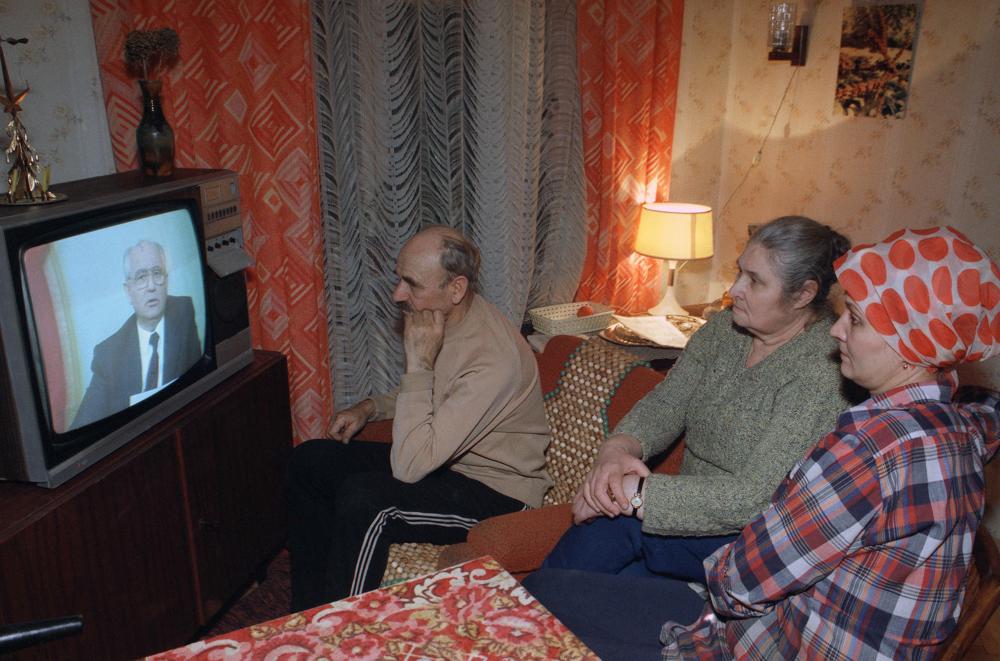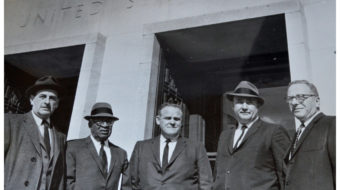
Socialism Betrayed: Behind the Collapse of the Soviet Union
By Roger Keeran & Thomas Kenny
International Publishers, 2004
Softcover, 230 pp., $14.00
The demise of the Soviet Union was a watershed event in human history. The effects of that collapse are still reverberating today — and not only in the former USSR, where average life expectancy has plummeted and where poverty, malnutrition and disease have multiplied enormously.
In global politics, the absence of the Soviet Union as a political and military counterweight to imperialism has emboldened U.S. rulers (particularly the Bush administration) to launch new, ever more reckless wars of imperial conquest. And to the extent that social welfare programs in the West were at least partially framed to offset the achievements of Soviet socialism — which provided universally free health care, child care, education through university, job and retirement security — those programs are now under merciless attack by the capitalist class worldwide.
Working people everywhere have a big stake in figuring out what went wrong and understanding the dynamics of this catastrophic setback.
Explanations of how and why the Soviet Union fell apart tend to fall into several broad categories, including (1) socialism didn’t work there because it goes against “human nature,” (2) Russia wasn’t economically ready for socialism in 1917 and was doomed from the start, (3) people there didn’t like socialism and wanted to bring it down, (4) Soviet society was too bureaucratic and undemocratic, (5) the U.S., through economic and military pressure, brought about the collapse, (6) Gorbachev misled the country and sold it down the river.
Socialism Betrayed, a new book by historian Roger Keeran and economist Thomas Kenny, critically evaluates all of these arguments and many more. It is by far the most comprehensive, detailed discussion of these arguments to date, and for this reason alone is worth the purchase price.
But far from offering a mere catalog of others’ views, the authors present their own strikingly fresh, well-researched, original analysis of what happened, an analysis that draws upon voluminous data, historical debates, and the Marxist method of historical materialism.
At the heart of Keeran and Kenny’s analysis is their discussion of growth of “the second economy” in the Soviet Union — private legal and illegal enterprise that was conducted outside of the “first,” publicly owned, socialized sector — and its role in giving rise to pro-capitalist social forces. These are the forces, they argue, that provided the social and political basis for Gorbachev’s eventual move to dismantle the USSR and bring about the destruction of Soviet socialism.
Calling the second economy in the Soviet Union “a phenomenon overlooked by most Marxists and non-Marxists,” the authors provide data showing that the scope of private and illegal economic activity ballooned during the last three decades of the USSR’s history.
They cite, for example, the work of Tatiana Koriagina, a Soviet economic specialist at the State Planning Commission, who estimates that the growth in illegal goods and services grew from about 5 billion rubles in the early 1960s to 90 billion in the late 1980s. By 1988, the total amount of illegally obtained income amounted to 20–25 percent of all personal wealth in the country.
“Koriagina’s figures represented only income from illegal economic activity,” the authors write, noting that when legally sanctioned private activity is added in, the private sector constituted 30 percent or more of the economy, and in some branches of the economy rivaled or even eclipsed the state-owned sector. Sometimes huge private enterprises were masked as “people’s cooperatives,” ruses that multiplied enormously during the Gorbachev years.
Similar data is cited from U.S. academics and Sovietologists, many no doubt hostile to socialism, but whose data command respect nonetheless.
The lack of Communist Party vigilance in containing the private and illegal sector was its biggest failing, they argue, and that failing was itself conditioned by widespread corruption of the Party leadership that stemmed from the very same source.
Gorbachev is roundly criticized as a weak and vacillating leader who opportunistically followed the path of least resistance — whether it was in the area of confronting pro-capitalist forces at home and U.S. imperialism in global politics, or in defending the rights of national minorities. (The authors’ treatment of “the national question” as a bellwether issue is quite interesting.) Gorbachev’s gradual capitulation to the pro-capitalist elements is traced in detail, but always in the context of the broader class forces at work.
The authors devote an early chapter to what they call “two trends in Soviet politics”: one, the tendency toward conciliation with private enterprise and market economics, represented by Nikolai Bukharin (1888-1938), Nikita Khrushchev (1894-1971), and Mikhail Gorbachev (b. 1931); the other, more firmly insistent on public ownership and central planning, represented by Vladimir Lenin (1870-1924), Joseph Stalin (1879-1953), and Yuri Andropov (1914-1984).
While different political tendencies — reflecting different class and other interests — exist within every party, this section of the book seems a bit one-sided or stretched at some points. The authors’ estimates of Stalin’s role, for example, rely too heavily on the words of his associates and admirers, with a resultant soft-peddling of Stalin’s errors and crimes.
Overall, however, in this part of the book and elsewhere, Keeran and Kenny have provided readers with a treasure trove of thought-provoking analysis. And given the role played by capitalist investment and commodity production in China and Vietnam today, for example, these questions are anything but academic.
The book deserves wide readership among all partisans of social progress, equality, peace and socialism.
The author can be reached at malmberg@pww.org.










